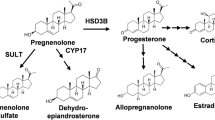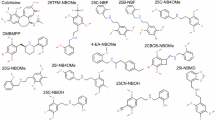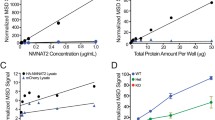Abstract
MAPREG (microtubule-associated protein/neurosteroidal pregnenolone) is a start-up company that was created in October 2000. Its acronym recalls the basic discovery (Murakami et al., 2000) from which drug(s) will hopefully be developed that are useful for neuroprotection and repair in conditions such as post-traumatic and postischemic lesions, as well as defects proper to normal aging and neurodegenerative diseases, that is, principally Alzheimer’s disease. Pregnenolone, the main steroid synthesized from cholesterol in the nervous system (therefore, a neurosteroid), binds specifically with high affinity (≥40 nM) to microtubule-associated protein 2 (MAP2), a protein family involved in the assembly and stabilization of microtubules made from tubulin α and β polymers, and in the bundling of several microtubules by MAP2 projection arms. Pregnenolone binding increases MAP2-induced microtubule polymerization, when purified tubulin and MAP2 are coincubated in GTP containing buffer at 37°C. Therefore, MAP2 can be considered as a receptor for a novel mechanism of steroid action. The underlying principle and its potential pharmacological consequences are described in an INSERM patent (FR 0003430; March 17, 2000) (see Fig. 1).
MAPREG has established its own laboratory in a space rented to Bicêtre hospital, near the research building of INSERM, where two of the main founders of the company (Drs. E. Baulieu and P. Robel) work. The company has been quite successful, largely thanks to the support of ISOA (attributed in October 2002). A lead compound (pregnenolone derivative) was tested and patented by MAPREG early in 2003 (FR 0300507; January 17, 2003). Activities and results reported at the ISOA meeting on Oct. 2, 2003, include in vitro basic studies, in vitro and in vivo neuroprotection trials in rodent systems, and studies with human cells and an AD transgenic mouse model.
Similar content being viewed by others
References
Basso D. M., Beattie M. S., and Bresnahan J. C. (1995) A sensitive and reliable locomotor rating scale for open field testing in rats. J. Neurotrauma 12, 1–21.
Ferrari A., Hoerndli F., Baechi T., Nitsch R. M. and Götz J. (2003) β-Amyloid induces PHF-like tau filaments in tissue culture. J. Biol. Chem., 278, 40162–40168.
Gótz J. (2001) Tau and transgenic animal models. Brain Res. Rev. 35, 266–286.
Murakami K., Fellous A., Baulieu E. E., and Robel P. (2000) Pregnenolone binds to microtubule-associated protein 2 and stimulates microtubule assembly. Proc. Natl. Acad. Sci. USA 97, 3579–3584.
Author information
Authors and Affiliations
Corresponding author
Rights and permissions
About this article
Cite this article
Baulieu, EE., Robel, P., Fellous, A. et al. Mapreg. J Mol Neurosci 24, 63–65 (2004). https://doi.org/10.1385/JMN:24:1:063
Issue Date:
DOI: https://doi.org/10.1385/JMN:24:1:063




